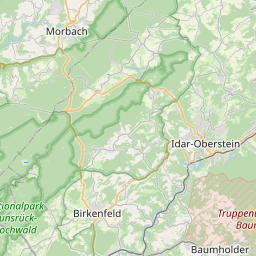






Description: Das Projekt "Brennstoffzellenstack der 3 kW-Klasse auf Basis geprägter graphitischer Bipolarplatten (NG PEM Stack), A 3 kW-class fuel cell stack based on embossed graphitic bipolar plates (NG PEM Stack)" wird/wurde gefördert durch: Bundesministerium für Wirtschaft und Energie. Es wird/wurde ausgeführt durch: AVL Deutschland GmbH.Transfer of a machined bipolar plate design to a moldable plate design, leading to an inexpensive PEM stack for applications with high lifetime requirement and development of improved simulation methods as tool for PEM FC stack development. Background: In Europe there is significant demand for PEM fuel cell stacks for applications in the area of material handling, telecommunication and industrial applications. In addition to the operation lifetime (up to 15.000 operating hours), the cost targets are still challenging. Molded carbon composite bipolar plates are an option to approach the cost requirements of the PEMFC. Gas-tightness, electrical conductivity, dimensional accuracy and deviations in the geometries of the plates can critically influence performance and lifetime of the stack. In addition to these an elaborate production process might achieve a high dimensional accuracy but miss the cost targets required by the application. Molding of the bipolar plates gives limitations but also possibilities in the plate design. Geometrical structures of the machined plate have to be adapted to make them moldable. But on the other hand features wich not could be machined at reasonable costs might be easily molded without additional costs. So the aim of the project is to develop a stack based on molded graphite composite bipolar plates which can cope with the high lifetime requirements of the named applications but still be cost-effective enough to reach the cost targets defined by the applications. Base for the work in this project is an existing stack, which is produced using machined carbon composite bipolar plates. For the analysis and assessment of the developed bipolar plate designs, advanced CFD-simulation methods are applied and further improved. Using accurate and validated simulation methods, the flow field and the mass transfer within the fuel cell can be predicted and analyzed. The influence of different plate parameters on cell performance and lifetime will be evaluated. Modifications of plate structure will be made both to achieve better plate manufacturability and better stack performance. So production of molded bipolar plates, stack assembly procedures as well as tests towards stack performance and lifetime will be done within the project, together with a verification of the technological and economic potential of molded carbon bipolar plates. Main project targets are: - Transformation of the existing stack platform based on machined graphite plates to a less expensive stack based on molded carbon composite bipolar plates - Optimization of flow field structures towards better performance and moldability - Optimization of assembly processes on cell and stack level taking advantage of the possibilities of molded bipolar plates - Certification of the stack made from molded bipolar plates - Development of improved simulation methods for the prediction of the electro-chemistry and the flow field in the PEM fuel cell.
SupportProgram
Origins: /Bund/UBA/UFORDAT
Tags: Verbundwerkstoff ? Graphit ? Brennstoffzelle ? Elektrochemie ? Kohlenstoff ? Zertifizierung ? Telekommunikation ? Verfahrensoptimierung ? Energietechnik ? Kostensenkung ? Physikalisches Modell ? Produktionskosten ? Strömungsfeld ? Modellierung ? Europa ? REACH ? Stofftransport ? Wirtschaftliche Aspekte ? Technische Aspekte ? Werkstoffkunde ? Haltbarkeit ?
Region: Rheinland-Pfalz
Bounding boxes: 7.5° .. 7.5° x 49.66667° .. 49.66667°
License: cc-by-nc-nd/4.0
Language: Englisch/English
Time ranges: 2012-07-01 - 2015-03-31
Webseite zum Förderprojekt
https://www.tib.eu/de/filter/?repno=03ET2059B (Webseite)Accessed 1 times.